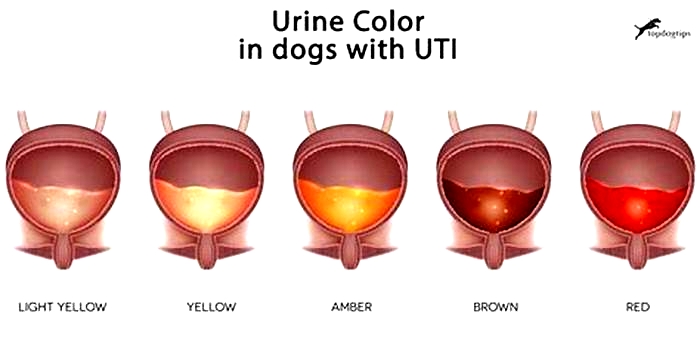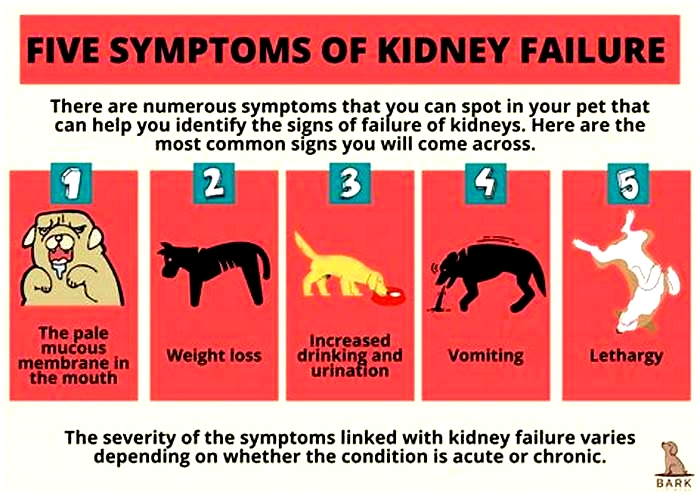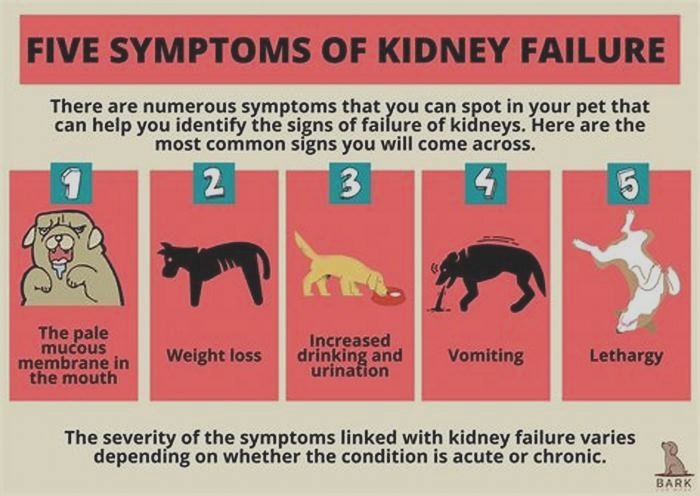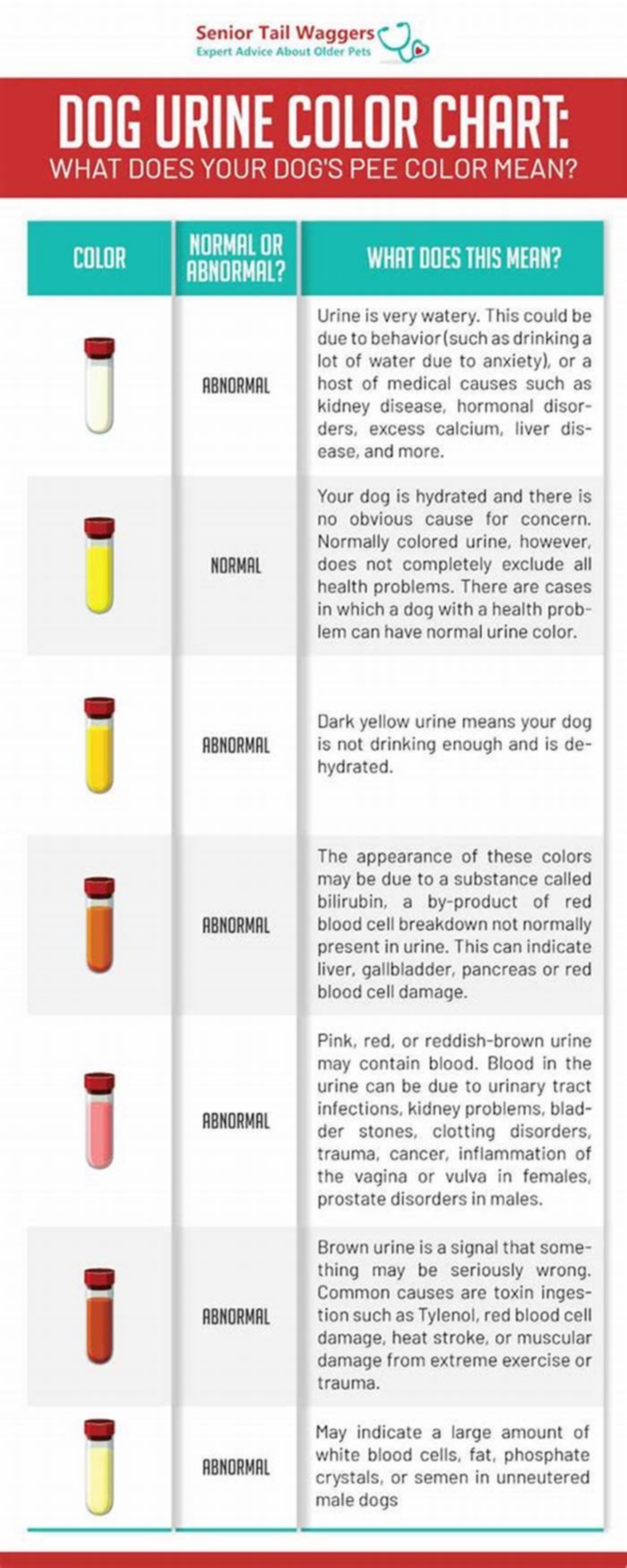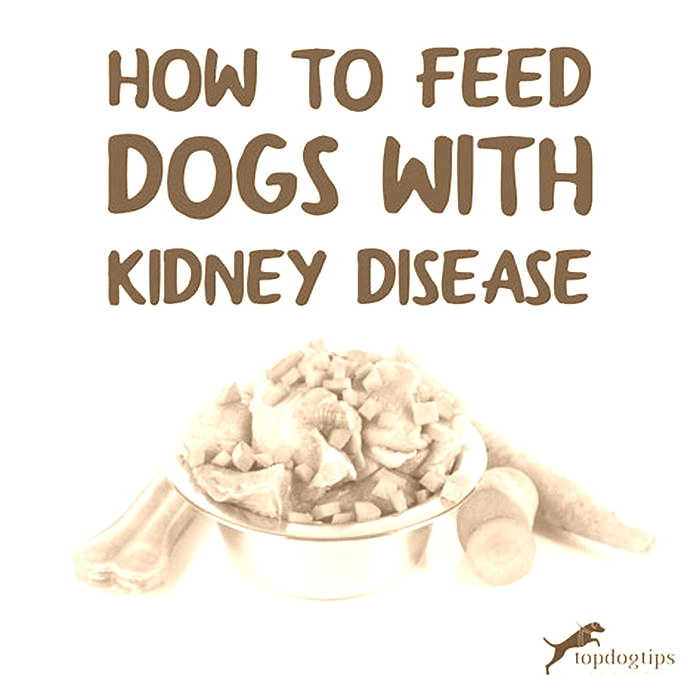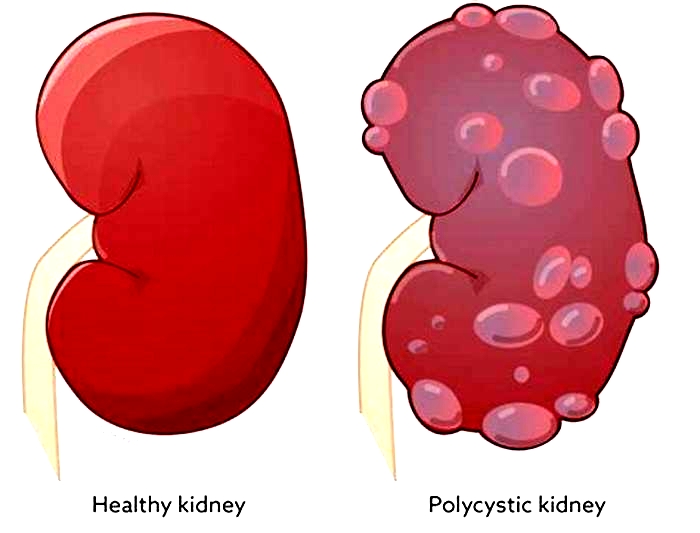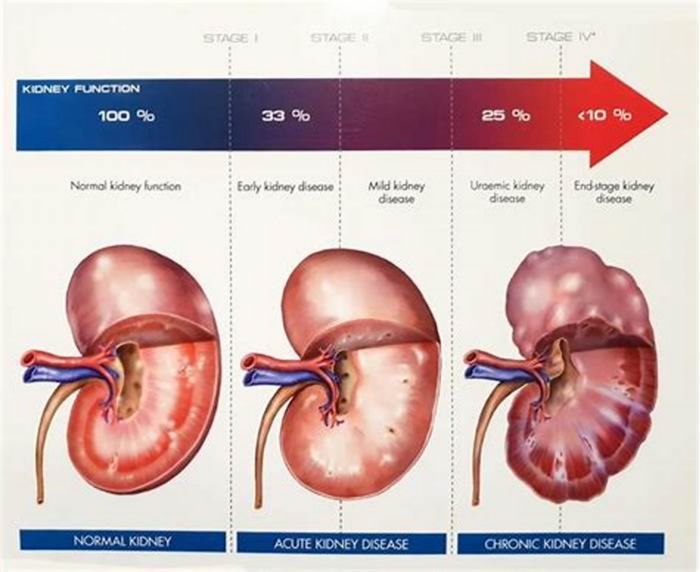kidney disease in dogs leaking urine
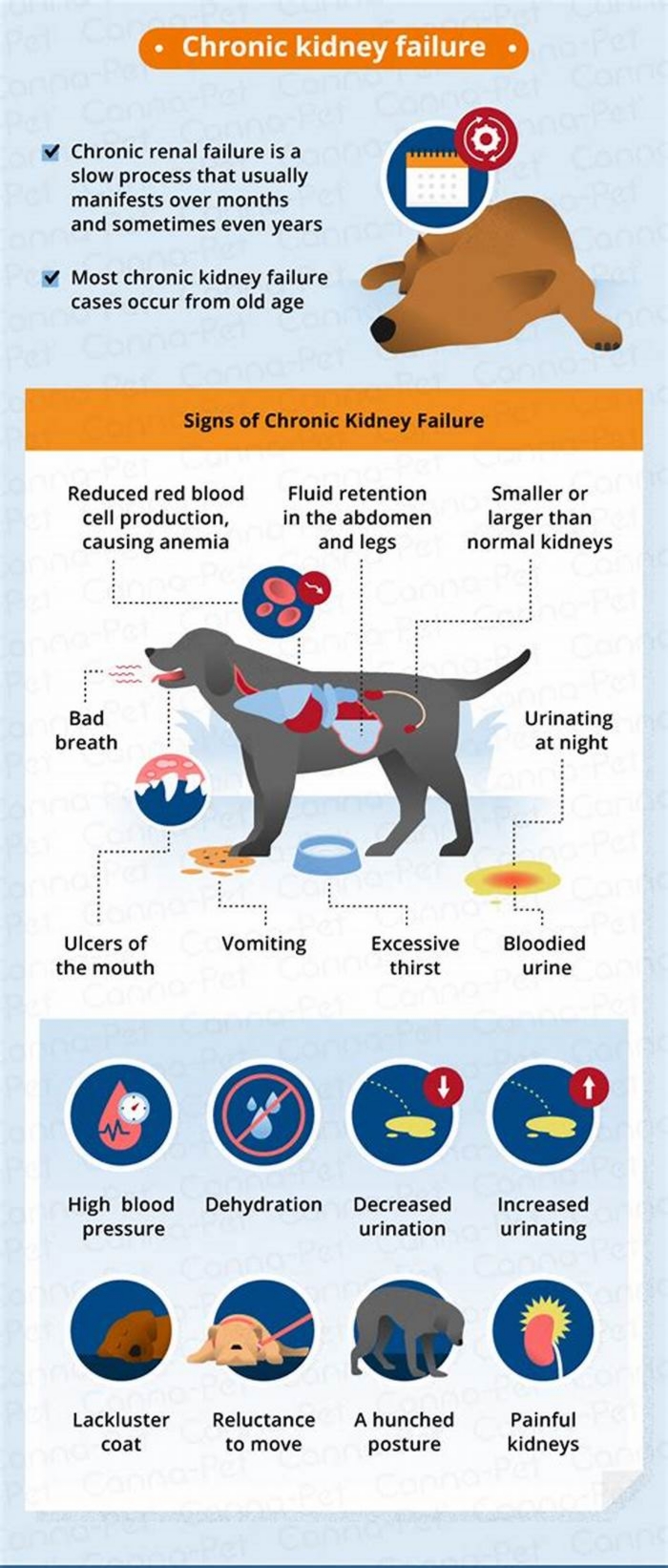
Dog Leaking Urine: Causes and Treatments
It is not unusual that older, primarily female dogs, suffer from urinary incontinence (dogs leaking urine) when they have no control over the bladder (1).
The reasons for the involuntary passing of urine can be various, but hormone dissemblance is the most common cause for this condition in spayed dogs.
In some cases, this condition can be connected with the bladder itself and other infections, medicines, or obesity (2).
Urinary incontinence in dogs includes a wide range of leaking, from occasional small urine leaks to a sudden release of large quantities of urine.
5 Causes of a Dog Leaking Urine
There are numerous reasons why dogs leak urine uncontrollably, and most of them are unavoidable symptoms of aging or disease.
1. Spayed females can cause dogs to leak urine
In female dogs, especially spayed ones, hormone-induced urinary incontinence is the most commonly diagnosed condition (3).
Even though estradiol concentration may vary even in healthy dogs, the primary reason for incontinence is often a lack of this form of estrogen (4).
2. Geriatric dog leaking urine
When the dog gets old, they may lose control of their bladder, either partially or fully, since the urethral sphincter weakens.
It is common in medium and large breeds when they get older, but age is not always the only reason.
Often, dogs may suffer from an infection of the urinary tract. Therefore, visiting the vet is highly recommended to confirm if there is an underlying health issue.
Also, it is not rare that some congenital abnormalities are revealed only when the dog grows older.
3. Dog leaking urine because of damage to the pudendal nerve
This condition occurs in older dogs with joint disease or arthritis (5).
When a dog's pudendal nerve becomes affected by trauma, that dog's bladder cannot close entirely, and urine leakage will appear (6).
4. Congenital disabilities can cause a dog incontinence
These structural abnormalities may cause incontinence even in puppies (7).
It is common with some breeds, including Siberian Huskies, Wirehaired Fox Terriers, Labrador Retrievers, Miniature Poodles, Corgis, Collies, and Westies (8).
5. Diseases can cause increased urination and a dog leaking urine
Some health issues, such as kidney disease or diabetes, may cause increased urination in dogs, urinary tract infections, and consequential incontinence.
Other possible health problems that may cause a dog to leak urine can be:
- Infection of the bladder
- Bladder stones
- Urethral obstruction
- Hyperadrenocorticism
- Prostate disorders
- The trauma of the CNS (brain and spinal cord)
- Spinal degeneration in German shepherds
- Cancer
- Medications
Symptoms of Urinary Incontinence in Dogs
In most cases, the dog is entirely unaware of leaking urine. The general symptoms indicating that there is a problem include:
- Dripping urine underneath the dog while relaxing or sleeping
- Irritated and red skin around the dog's genitals
- Excessive licking of the private area
- The space for sleeping is always contaminated with urine
How This Condition is Diagnosed
It is not a problem to diagnose leaking urine in dogs since this condition is visible to everyone.
However, visiting a vet for a physical exam is recommended because determining the underlying cause is crucial.
Checking urine and blood, diagnostic tests, and additional screening will help the vet look at the problem (9).
The necessary tests will depend on the dog's age and the presence or absence of specific symptoms.
To help your veterinarian make an adequate diagnosis, you need to give precise answers to the following questions:
- Whether the dog urinates normally
- How much water does the dog usually drink
- The age of the dog when leaking urine appeared for the first time
- If it oftenhappens at rest or during activity
- Previous illnesses and neutering
- Possible signs of nervous system diseases
- Used medications
Treatments for a Dog Leaking Urine
A dog's leaking urine therapy is always based on a specific diagnosis and the underlying condition leading to this disorder.
Luckily, approximately 90% of incontinence dogs respond to adequate treatment.
A dog's incontinence is not an emergency in most cases, but it is better to take your pet to the vet when the first signs of illness occur.
It may facilitate healing and accelerate the disappearance of symptoms.
Infection. If the primary reason for a dog leaking urine is a bladder or urinary tract infection, prescribed antibiotics will quickly solve both the disease and leakage.
Hormonal imbalance. When the dog has an issue with hormone-responsive incontinence, phenylpropanolamine or collagen injections will increase muscle tone and control regular urinary retention.
In the case of lacking estrogen, it is necessary to provide hormonal support to female dogs. The best way to increase the level of estrogen is with medications such as Incursion.
An anatomical abnormality, urethral obstruction, or bladder stone. In such a case, surgery is often recommended, and sometimes, it's the only solution.
Other diseases. If the dog suffers from kidney disease, diabetes, prostate disorders, or neurological disease, the therapy will solve that primary cause by stopping urine leaking.
When it is impossible to determine the specific cause of incontinence, the best way to help your dog is to have the vet prescribe drugs such as estrogen, phenylpropanolamine, or ephedrine.
They will increase the tone of the muscles of the bladder and improve the overall condition.
Since some of these medications may cause side effects, starting the treatment with low doses is recommended.
When the dog responds to medications adequately, the leaking will stop within several days.
If that is not the case, the vet may recommend additional diagnostics and tests or refer the dog to another specialist.
How to Prevent Urinary Incontinence in Your Dog
Incontinence in dogs is not entirely preventable. However, there are ways to help your pet manage this condition once it appears, including:
- Taking the dog for walks in the morning and more frequently during the day to provide conditions for regular urinating
- Using training pads to teach a puppy or senior dog to lie down and sleep on easy-to-clean surfaces from the very beginning
- Preventing infection by adequately cleaning the dog
- Regular changing towels and blankets in your dog's favorite resting spot
- Placing waterproof pads under the dog's bedding
- Using dog diapers
Possible Complications
In most cases, leaking urine in dogs is treatable. Unfortunately, it is possible to face progression of primary bladder or kidney infections in some cases.
As a result, an issue with a skin infection may occur in the area in direct contact with urine.
Dogs Prone to Leaking Urine
Even though incontinence can affect any dog regardless of their age, gender, or breed, there are some dogs more prone to this disease, including:
- Older spayed females
- Dog breeds such as Siberian Huskies, Wirehaired Fox Terriers, Labrador Retrievers, Miniature Poodles, Corgis, Collies, Westies, Doberman Pinschers, Cocker spaniels, and Old English Sheepdogs
Supplies You May Need if Your Dog has Leaking Urine
Whether you have a puppy, a senior dog, or a female dog with hormonal or other health problems causing them to leak urine, you can employ a few things to help manage this condition alongside the treatment plan devised by your veterinarian.
Conclusion
Even though the primary cause of a dog leaking urine directly determines the prognosis of incontinence, it's treatable in most cases.
How long the dog will need to start controlling urination again may vary.
However, regular treatment with adequate medications and necessary lifestyle changes may help in managing the problem successfully.

Disclosure: Wemay earn affiliate commissions at no cost to you from the links on this page. This did notaffect our assessment of products.Read more hereand findfull disclosure here.
Kidney Disease in Dogs: Signs, Symptoms, and Treatment
Your dogs kidneys are essential organs that filter waste products from the bloodstream. When the kidneys are weakened, either by acute or chronic kidney disease, your dogs health could suffer. Because kidney disease progresses over time, its important to learn the common symptoms so tha you can recognize them. If you catch kidney disease in dogs early on, treatment can slow down the progression and allow your dog to live longer.
What Is Kidney Disease in Dogs?
Kidney disease in dogs is sometimes called renal or kidney insufficiency because it occurs when a dogs kidneys stop doing their job as efficiently as they should. The main job of the kidneys is to help clear and excrete waste products from the blood and convert them to urine, says Dr. Jerry Klein, Chief Veterinary Officer for the AKC. If the kidneys are not working properly, these waste products can build up in the blood, causing detrimental effects.
Dogs can get either acute kidney disease, which develops suddenly, or chronic kidney disease (CKD), which develops slowly and worsens over an extended period. Both involve loss of kidney function, but they result from different circumstances. Acute kidney disease is a sudden attack or injury to the kidney, whereas chronic kidney disease is a slow, degenerative loss of kidney function, Dr. Klein explains.
What Causes Kidney Disease in Dogs?
Dr. Klein warns that kidney disease could be caused by a lot of things, including infection (such as with the bacteria that causes leptospirosis), trauma, genetics, drugs, toxins, cancer, mechanical obstructions (like kidney stones), and degenerative diseases (where the job and form of the affected body part get worse over time). Anything that decreases blood flow to the kidneys, such as dehydration or heatstroke, can cause the kidneys to fail.
Acute kidney disease in dogs can be caused by exposure to hazardous materials, including toxic plants such as lilies, certain drugs, harmful foods such as grapes or raisins, or antifreeze. Puppy-proofing your home and yard can keep your dog away from potentially harmful items or foods that could be toxic.
Chronic kidney disease in dogs is also associated with growing older. Because kidney tissue cant regenerate once its damaged, the kidneys can wear out over time. As small-breed dogs often live longer than large-breed dogs, they tend to show early signs of kidney disease at an older age10 years old or more, compared to as young as 7 for the large breeds.
What Are the Symptoms of Kidney Disease in Dogs?
The earliest signs of kidney disease in dogs are increased urination and therefore increased thirst. Other symptoms dont usually become apparent until about two-thirds of the kidney tissue is destroyed. So, in the case of CKD, the damage may have begun months or even years before the owner notices. Because of this, its common for the signs of kidney disease in dogs to seem like they came out of the blue when in fact, the kidneys have been struggling for a long time.
Other signs of chronic kidney disease in dogs to watch for include:
Dr. Klein says there are some rarer symptoms of kidney disease in dogs to be aware of, as well. On occasion, there can be abdominal painurinary obstructions or stonesand in certain instances, one can see ulcers in the oral or gastric cavity. In extreme cases, little or no urine is produced at all.
What Are the Stages of Chronic Kidney Disease in Dogs?
Kidney disease in dogs is measured in stages. Many veterinarians use the IRIS scale, which has four stages. Blood work measurements like creatinine and SDMA (biomarkers for kidney function) allow your vet to assign your dog to a particular stage which will determine the exact treatment.
Dr. Klein explains, The stages determine how well the kidneys can filter waste and extra fluid from the blood. As the stages go up, the kidney function worsens. In the early stages of CKD, the kidneys are still able to filter out waste from the blood. In the latter stages, the kidneys must work harder to filter the blood and in late stages may stop working altogether.
How Is Kidney Disease in Dogs Treated?
Dialysis (a medical procedure that removes waste products and extra fluid from the blood) is far more common in humans than in dogs, although peritoneal (kidney) dialysis can be performed in some cases. On rare occasions, surgical kidney transplant is possible in dogs.
But Dr. Klein specifies that depending on the type and stage of kidney disease, the main treatments for CKD are diet changes and administration of fluids, either directly into the veins (intravenous) or under the skin (subcutaneous). The balancing and correction of electrolytes are extremely important in the management of kidney patients, he explains.
Proper nutrition is needed, and there are many available diets formulated for cats and dogs with kidney issues, some by prescription only. Your veterinarian can help guide you to the most appropriate diet for your pet.
Because kidney disease, particularly in the late stages, can cause a dog to lose their appetite, it can be difficult to encourage your dog to eat enough. Dr. Klein advises, There are medications used as appetite stimulators available, such as the prescription drug mirtazapine. Capromorelin has recently been FDA-approved for dogs to address appetite in chronic kidney disease.
When Do You Need to Call Your Vet?
The prognosis and expected life span for a dog with kidney disease depend on the type of disease, the speed of progression, and underlying conditions present in the dog. However, the more serious the disease, the poorer the outcome. Thats why its so crucial to catch the illness early on.
According to Dr. Klein, In chronic kidney disease, there are methods, such as diets and medications, that can be used to lessen the burden of work the kidneys need to do and may help slow down the progression from one stage to the next. In acute kidney disease, there is less time and fewer choices available to prevent further damage to the kidneys and to try to jump-start the kidneys to get them to function normally.
Regular veterinary exams, including bloodwork, are an excellent way to spot kidney problems before the outward symptoms become apparent. And if you notice any of the above signs, dont hesitate to get your dog to the vet for further testing. It can make a huge difference in preserving kidney function and your dogs well-being for as long as possible.

